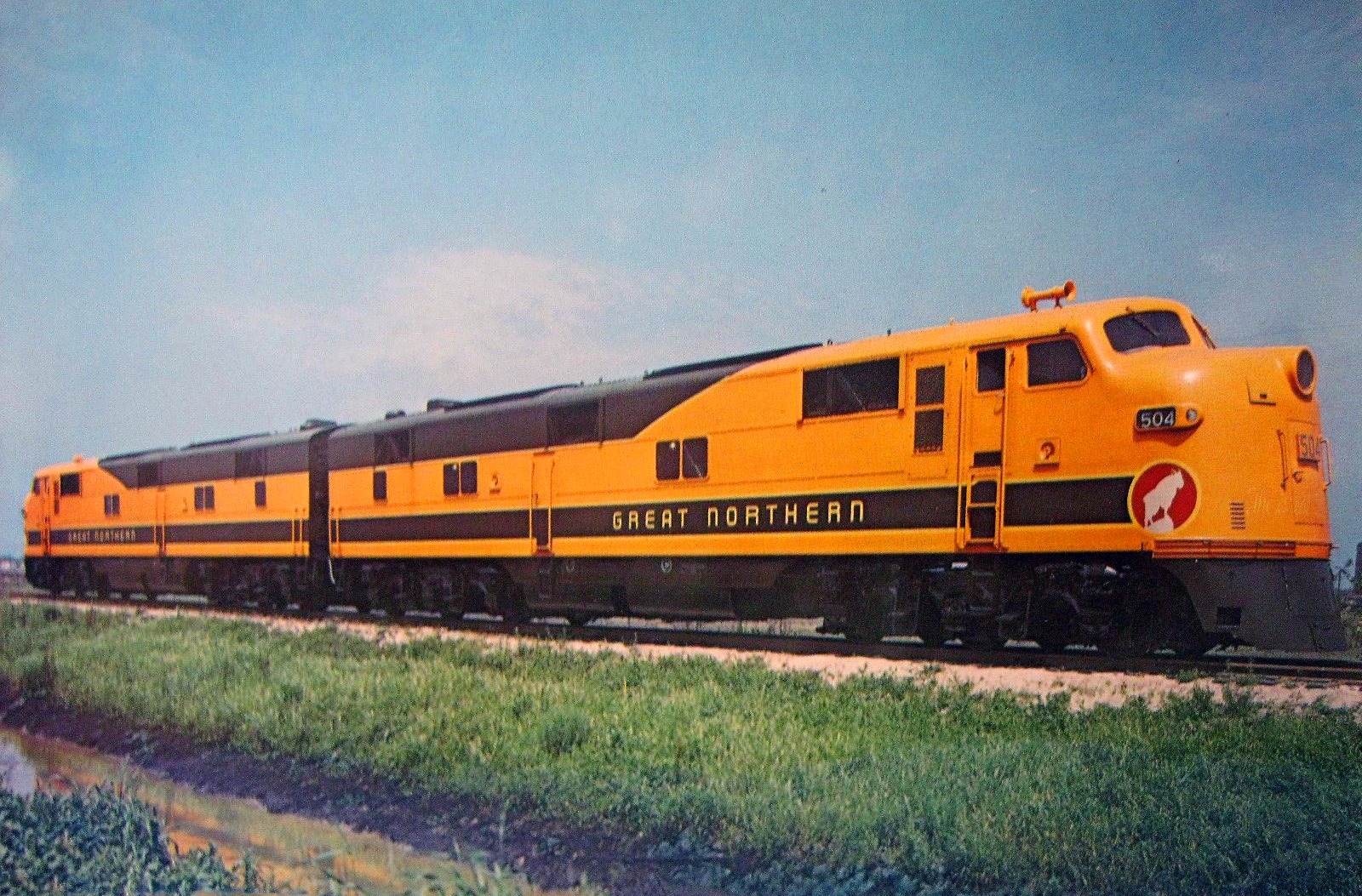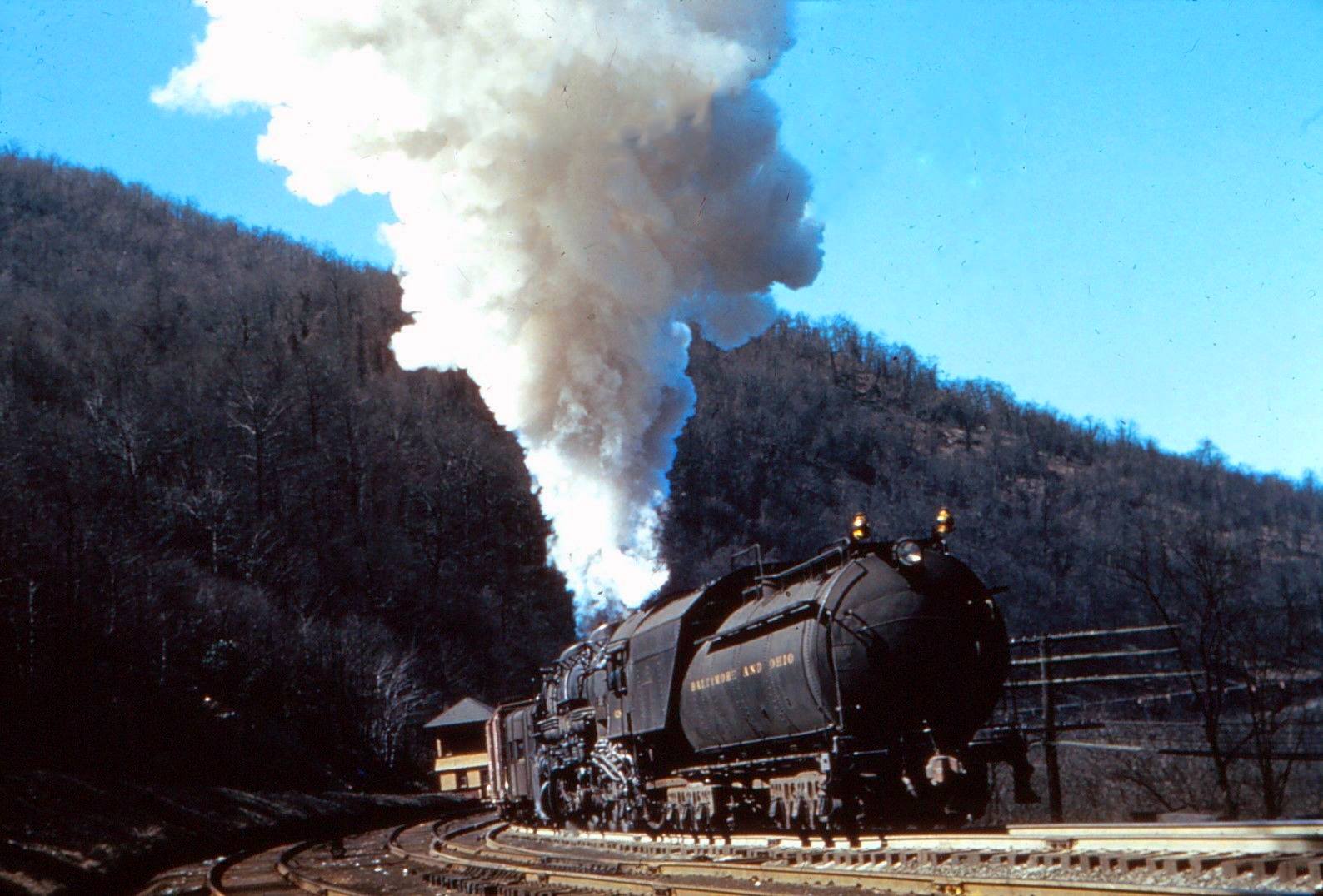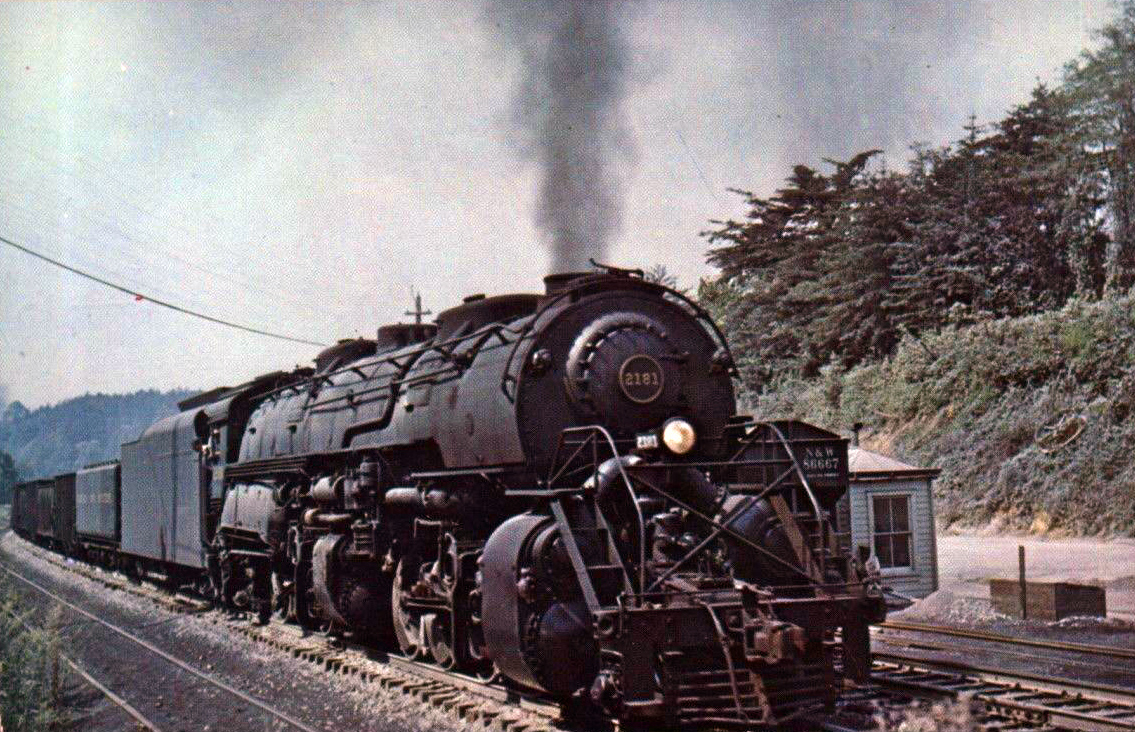I have heard that N&W had plans for a Y7 simple articulated, Is there and specs for this engine?
I believe that we discussed this recently, and the answer is yes. I think it was more of a higher speed design like the A, as opposed to the Y6. The original specifications still exist, and may not have yet been scanned. I’ll look for the applicable posts.
I checked my copy of “Norfolk and Western, Giant of Steam” to see if I could find anything for you, but there’s no mention of a Y7. I remember reading (somewhere) there was a Y7 proposed, but as diesels were coming into the picture nothing was ever done about it.
Sorry, but that’s all I’ve got.
Okay, I found a link in a post on an older thread. Look at the drawings, and have fun!
Bud Jeffries’ book contains information and a diagram of what the Y7 would have looked like based on available drawings. I developed a detailed elevation drawing based on that sketch about 10 years ago. I’ll see if I can find the page numbers in the book (s). I have the original drawing, but don’t know how to post the scan. Nothing seems to work to get the link posted here.
Feltonhill, I suspect you’ve got the updated edition of the Jeffries book. Mine’s the first edition from 1980. De-acessioned from the Library of Congress as a matter of fact. I got lucky.
I have both versions, and I thought it was in both. I’ll check the “library” tomorrow AM. It’s two floors down and I’m ready to call it quits for the day. Apparently there’s no way to post photos directly on the forum, so I guess we’re out of luck to see the drawing. I don’t have any accounts in photobucket , flickr or other photo sharing site. Sometimes technology works for you, sometimes it doesn’t.
For heaven’s sake, Ed King’s book on the A has a discussion of this engine, including a number of relevant specs. Juniatha in a previous post noted that she had looked at some of the surviving drawings and had doubts about some of the detail design.
Voyce Glaze’s book is one of the great treasures in the NWHS archives.
It might be noted, as I believe Ed noted, that there was nothing to keep the N&W from building a class of simple 2-8-8-2s after the ICC resolved the issue with permissible number of cars in trains. It’s significant, I think, that this did not happen (but a considerable amount of work was put into making the Y-class compounds capable of more efficient operation).
In Jeffries’ original N&W Giant of Steam, the Y7 text and diagram are on pgs 275-277. In the revised Edition, they’re on pgs 262-263. Diagram is the same. One caveat. The diagram in the book (and the detailed elevation I developed from it) features a Delta trailing truck. As the design progressed, this was changed to a trailing truck that was similar to the lead truck.
“For heaven’s sake”? Give us a friggin’ break Overmod, not everyone’s got Ed King’s book.
And Feltonhill, I checked pages 275-277, sure enough, there it is. Looks like I didn’t look as closely as I should have. “Mea culpa, mea maxima culpa…”
The trailing wheel is further back than on the Y6b, where it was just behind the drivers, and the firebox appears larger. Designed for higher speeds?
The Y7 has a much larger boiler and firebox than the Y5/Y6 classes. A Delta trailer truck has a relatively long side frame which gives it a characteristic appearance. When this idea was discarded, the rear of the locomotive frame was revised to accommodate a trailer truck that was similar to the lead truck. The boiler and the rest of the running gear remained the same.
The Y7 had 63" drivers, so it would have been a moderate speed locomotive. It was similar in size to the DRGW L-131 Class 2-8-8-2s although with higher pressure (275 or 300 psi).
With the extra diameter, maybe balancing would have been ‘improved’ sufficiently that, coupled with roller bearings throughout, speeds closer to 65-75 mph might have been intended/hoped for?
-Crandell
Love the white pass and Yukon route 101 class engine btw I saw heard of the railroad when I was only 3 and got into trains a year earlier and I went to ride the WP&YR last year and I loved it
Almost scared to ask but what was that about?
I’m going right over it to take up Crandell’s question from ‘before’
The ‘first’ part of this is that, from a purely technical point of view, the “proven” combination of lightweight rods and careful distribution of reciprocating mass N&W used would have resulted in a higher dependable road speed. It seems clear from the historical material that the Y7 represented what the “admission-balanced” version of the Y6 would have been: a locomotive with a high proportion of weight on drivers capable of N&W’s economical fast-freight speed, and reasonable acceleration to that speed from any kind of ‘check’.
Personally, I think it would have been desirable to use a cast driver of some kind for the main, but it might be noted that if Glaze’s balancing is extrapolated to smaller drivers there is room in even a strengthened spoke main for the comparatively small proportion of balance mass the formula calls for (the vertical component of piston thrust and perhaps some of the reciprocating momentum) in that driver. (I’ll say more about cast drivers in a bit.) Rods would be strengthened to accommodate the effect of more mass in the adjacent drivers. On the forward engine in particular, more overbalance than ‘usual’ for N&W might be required, as the relatively short lever arm of the single-axle lead truck would be poor at providing lateral compliance on the order of that seen on the Js, and it could be argued which of the driver axles should receive more or less of the ‘overbalance’ to help with augment handling.
I’d expect a Y7 to share the design of the equalization on the A class, limiting the vertical excursion between engines to a minimum
With N&W’s recognition of the economies of double expansion and their willingness to continue compound development, I’m surprised that the Y7 wasn’t designed as a large-drivered compound. The Y6b design rolled on 57" drivers–very short by late steam standards. The reports that these beasts were capable of running 40-50mph with those huge (39" dia) and heavy low pressure pistons are nothing short of amazing. Had the Y7 been designed as a compound with 63-65" drivers, it would have been capable of hauling very heavy trains at fast freight speeds with the economies of a compound, but far less pounding on the machinery (and track) than the Y6b. And with the large boiler that was envisioned, horsepower wouldn’t have tailed off as rapidly as it did above 30mph with the Y6b.
Scott
I thought ALL drivers were cast?
Roger Huber
It sounds like the N&W Y7 would have been similar to, or even exceeded, the Great Northern R-2 2-8-8-2 class with 63 inch drivers and 151,283 lbs of tractive effort…
/Steam/2-8-8-2/gn_2059_great_northern_class_r1_2882_smaller.jpg)






Great Northern had 16 of these R-2 units and 14 R-1 units similar in size but with about 10,000 lbs less tractive effort due to 210 PSI boiler pressure versus 240 PSI for the R-2 units.
They labored in the relative obscurity of the lightly populated (at the time) states of Washington, Idaho, Montana, North Dakota and Minnesota.
